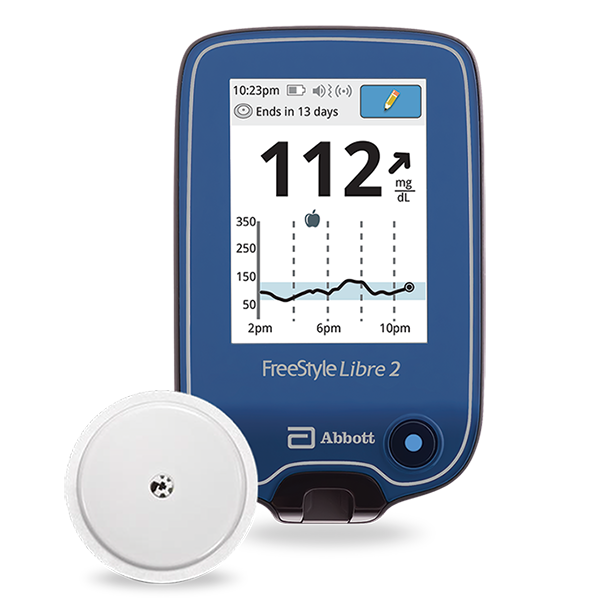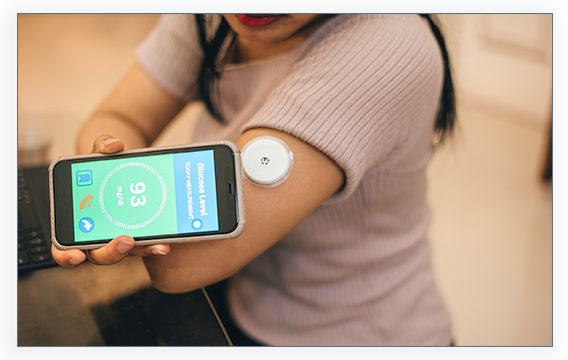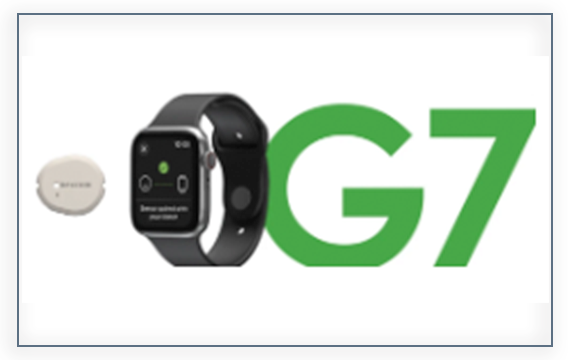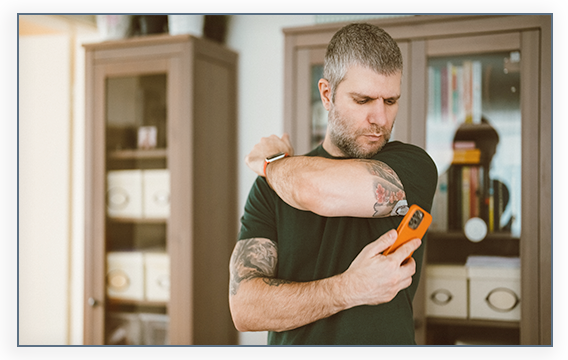How does continuous glucose monitoring work?
Glucose meters tend to make testing easier, but it can still be painful to constantly prick fingers for testing, especially for high-frequency testers. Now, there is a way to avoid unnecessary fingersticks: continuous glucose monitoring (CGM). A CGM captures your blood sugar levels and shows whether it is increasing, decreasing, or remaining steady.

If you’re wondering how continuous glucose monitoring (CGM) helps you gain better control of your diabetes, you’re in the right place! The ability to identify trends in your blood glucose levels is a critical piece of diabetes management and will help you make informed decisions to prevent lows, extreme highs, and erratic blood sugars. This additional information also helps you better understand how insulin, food, exercise, and other variables affect glucose values. View our top brands of CGMs!
How Does A CGM Work?
A Continuous Glucose Monitor (CGM) generally consists of a sensor, transmitter, and receiver. With most CGMs, users wear a small sensor on top the skin that they replace every couple of weeks. The sensor reads the user’s interstitial fluid to detect glucose levels, and the attached transmitter sends the sensor’s readings to the receiver or smartphone app (and in some cases, smartwatch). This makes it easy for the user to see their blood sugar data at any time. The user can also easily download and share the data with their healthcare team so that they fine-tune their diabetes treatment.

A new implantable CGM system called Eversense E3 works a little differently than traditional CGMs. The Eversense E3 sensor lasts 180 (!) days and is inserted via a quick in-office procedure. You’ll wear a transmitter over the insertion location, which will send your glucose readings to an app on your smartphone. If you’re interested in Eversense E3, talk to your endocrinologist first to determine the best way to get started.
Studies show that CGMs can reduce A1C levels, provide better glycemic control, and supply physicians with more data to make better-informed treatment decisions.
Have you been approved for a CGM?
Apply TodayBenefits of a CGM

Know your readings with zero routine fingersticks and no calibration

Shows real-time glucose readings to constant monitoring

Helps lower A1C and reduce hypoglycemic incidents

Provides insights for better diabetes management
Tags: CGM, Continuous Glucose Monitors, Diabetes, Diabetes Management, Diabetes Supplies



